The world of books is the key to imagination, the first step towards creativity, and a learning tool. To be up for this task, it is required that the home to shelter literary collections be an architectural paradise.
Plaza Biblioteca Sur (Lima, Peru)
It is one of the most recent projects, opened in 2017, created by the Gonzalez Moix architectural firm. In order to carry out the construction of the library, they made research work around the needs of the population of El Cascajal, neighboring urbanization to the building.
The building is located in the biggest space of the land, parallel to the pedestrian area and a park. Natural light was a strong condition and took the plan of the project to its surroundings, the design integrates book stacking into a shelf, a perfect order that can be appreciated when reaching the entrance, where two columns lean, marking the access.
One of the project’s main goals was its interior, the intention was to create a space in which the nature in the park could be admired along with Lima’s typical residential constructions.
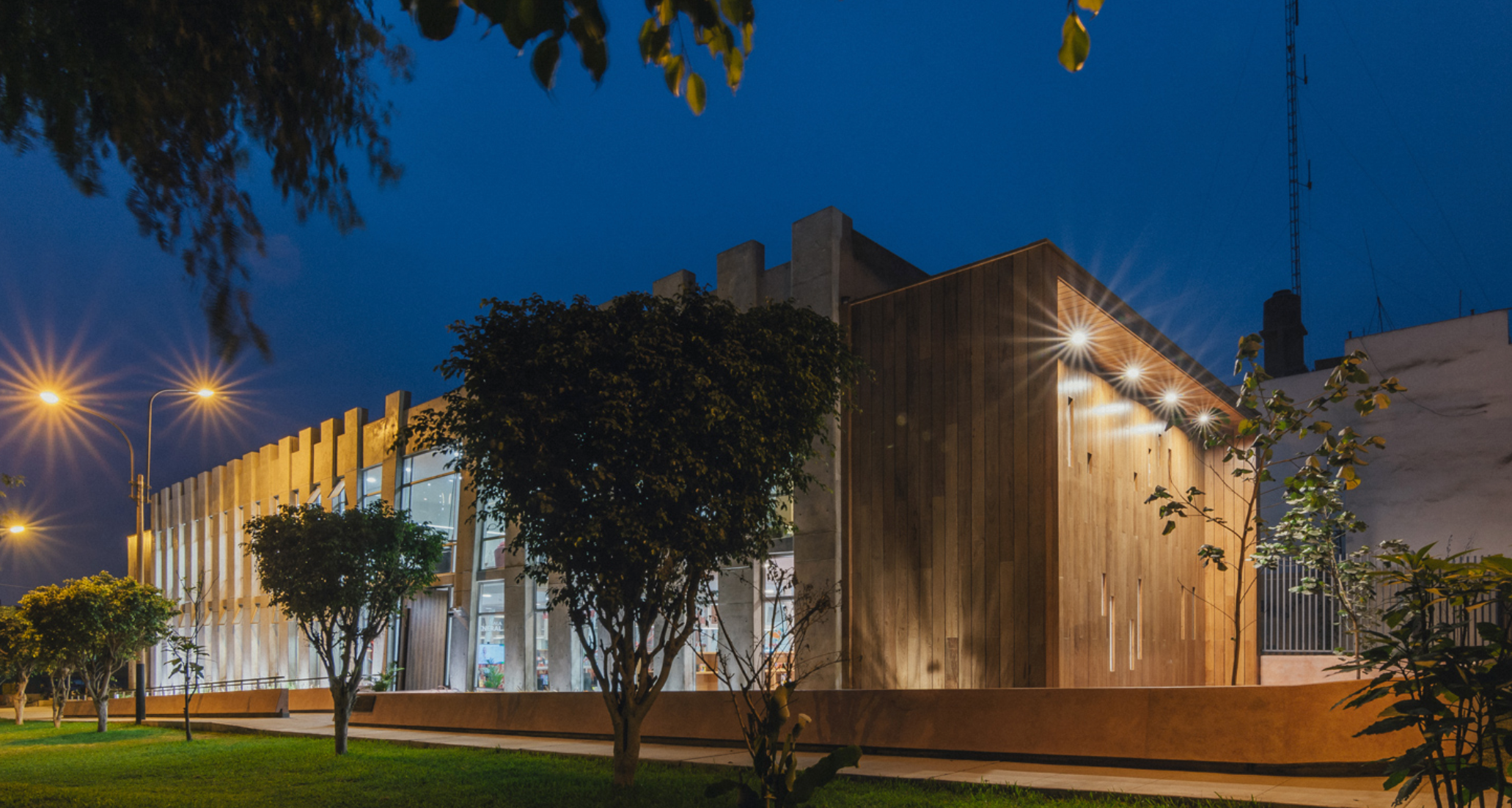
Biblioteca Vasconcelos (Mexico City, Mexico)
One of the most visited libraries in Latin America, surrounded by green areas that resemble the sinking of the site. Three blocks, each one with steel and glass shelves, that could hold up to two million books. A team of architects, led by Alberto Kalach was in charge of creating the project that opened its doors to the public in 2006, resulting in a cultural space to disconnect from the city’s chaos.
The garden is one of visitors’ favorite installations, boasting 168 species of Mexican flora. Also, the library features an auditorium, spaces dedicated to music, recurring publications, children area, multimedia halls, and a section dedicated to braille language.
The building’s structures feature different materials, like marble, concrete, steel, granite, wood, and glass; thanks to these, it has become one of the most representative buildings within the library world.
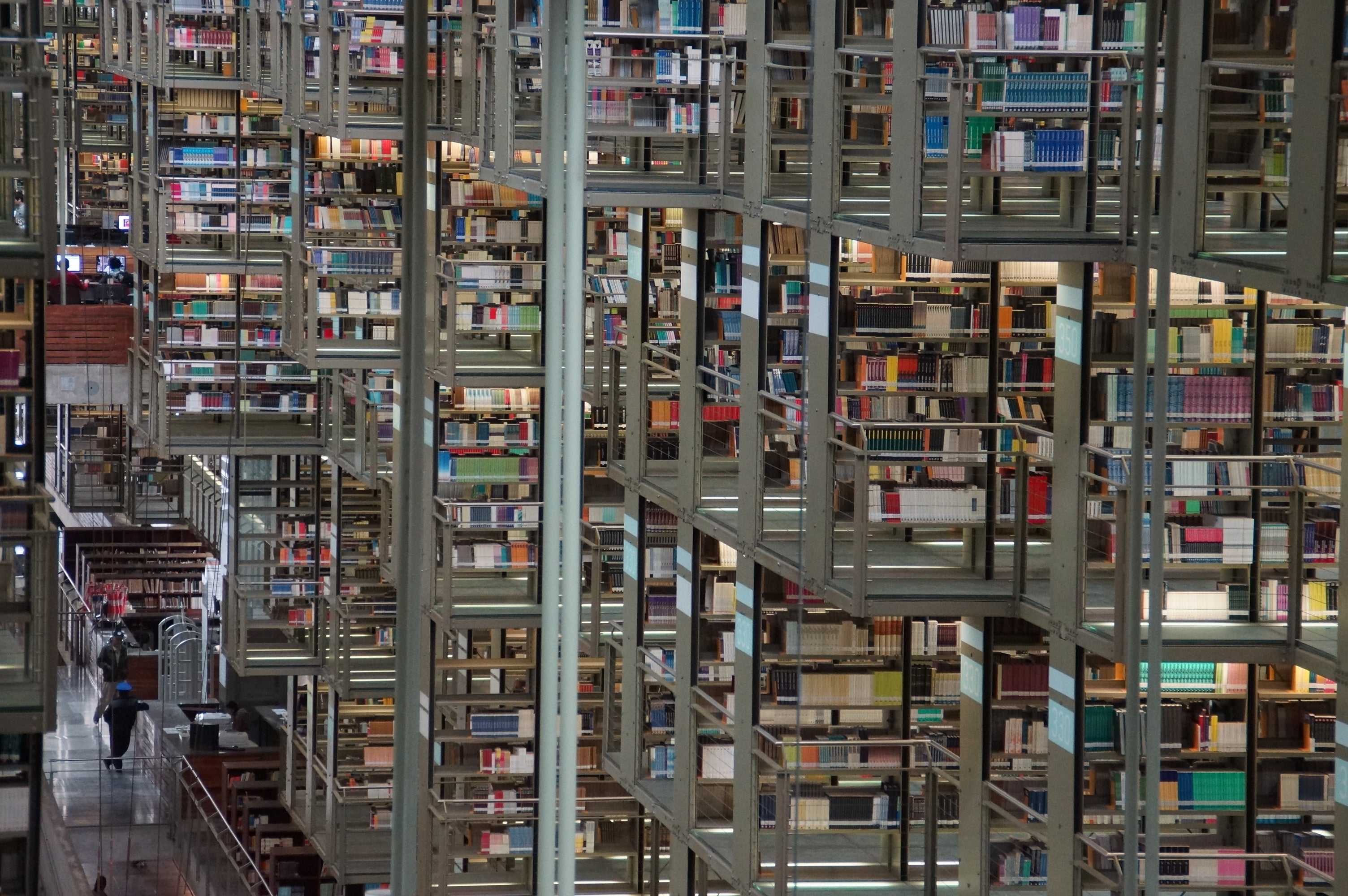
Beinecke Rare Book & Manuscript Library (Yale University, United States)
Library dedicated to rare books and manuscripts exclusively. It is the main source of information for Yale University in this kind of document collection; an example of it is that one of the 21 Gutenberg Bibles lives inside the building, which is deemed as history’s first printed book.
Gordon Bunshaft was commanded with the design and construction (which he finished in 1963), marble was the key piece for the project, since most books held here are very antique, so the rock was placed in the form of windows, which allow light in without damaging documents; granite, bronze, and glass were also used.
Inside it, books are sheltered in a kind of crystal box. Only students or researchers affiliated to the university may access.
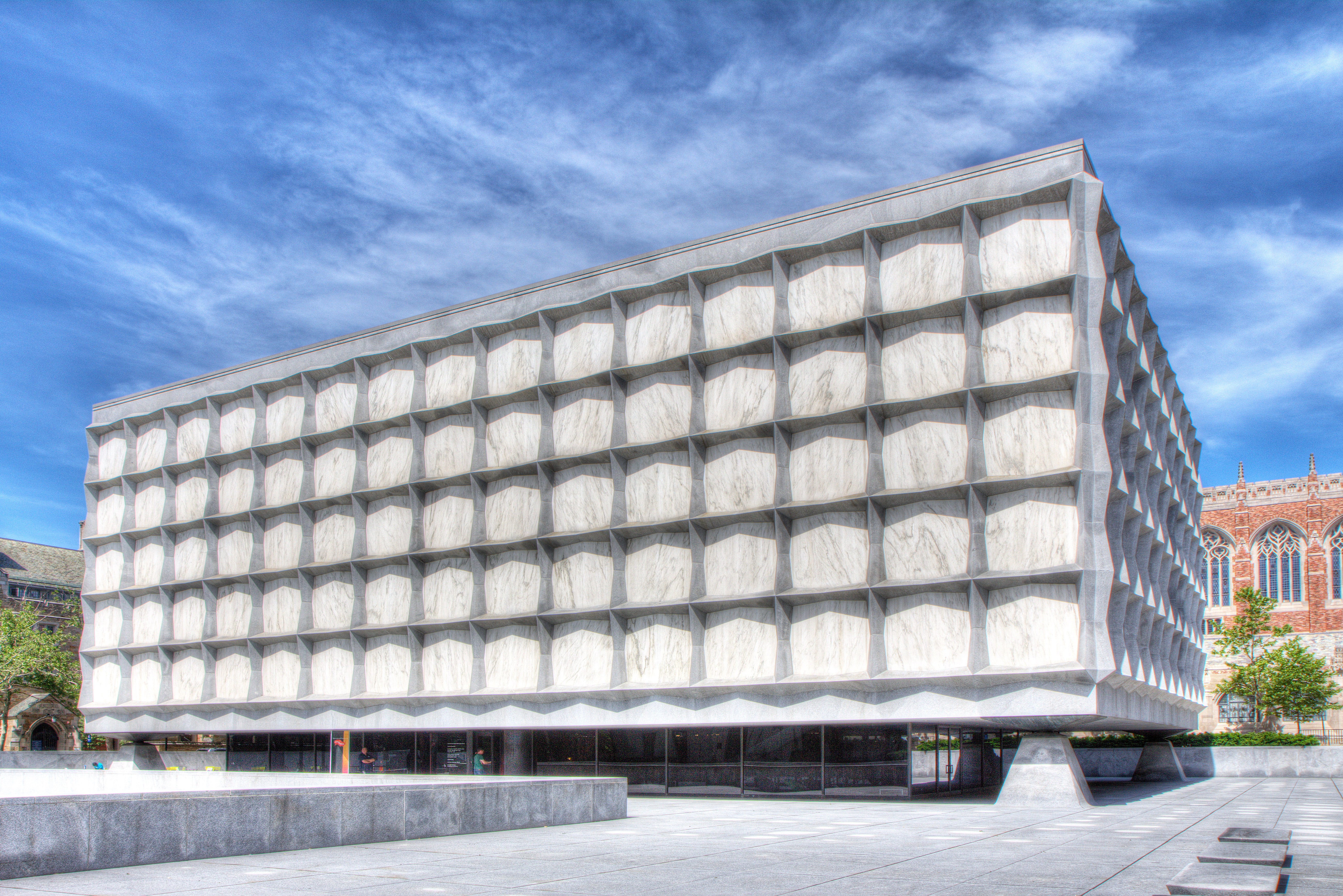
Tianjin Binhai Library (Tianjin, China)
Another project from 2017 is Tianjin Binhai Library, created by MVRDV architectural firm, who, by the hand of Tianjin Urban Planning and Design, made this construction as part of a master plan to bring culture to the city.
Today’s most dazzling library, finished in only three years (considered to be one of the fastest projects by MVRDV) has become a cultural center and is located in a 33,700m2 space; its design is comprised by a glass façade that resembles the human eye, thus its nickname: The Eye.
A total of 1.2 million books are featured in this space, which fully cover the hall. Currently, all the books placed on the ceiling are just for exhibition (they are not real).
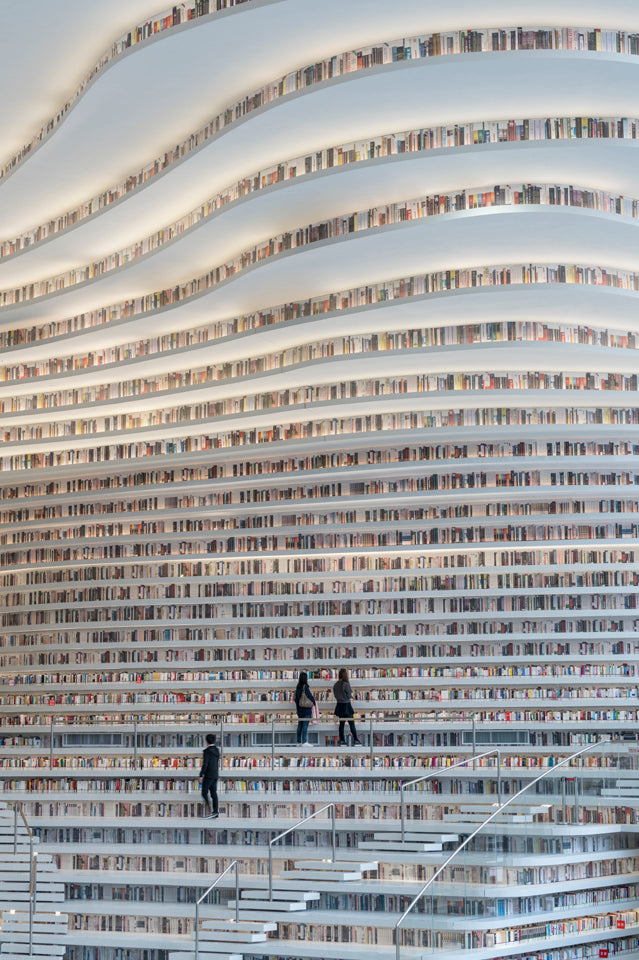
Utrecht University Library (Utrecht, Holland)
The library is located inside the Uithof campus and the global architect and designer firm Wiel Arets Architect (based in Switzerland, Holland, and Germany), was in charge of the project, which opened in 2004.
What stands out the most in this site is its geometry. Its frosted glass finishes work as a filter for light, to prevent it from damaging the books. In this way, it seems it becomes part of the gardens when seen from the outside.
The interior features bright white polyurethane floors and surfaces painted matte black; this contrast is meant to divide studying areas (black, since it is a concentration-inspiring color) and passage and common areas (white). To add greater impact, the furniture is red.
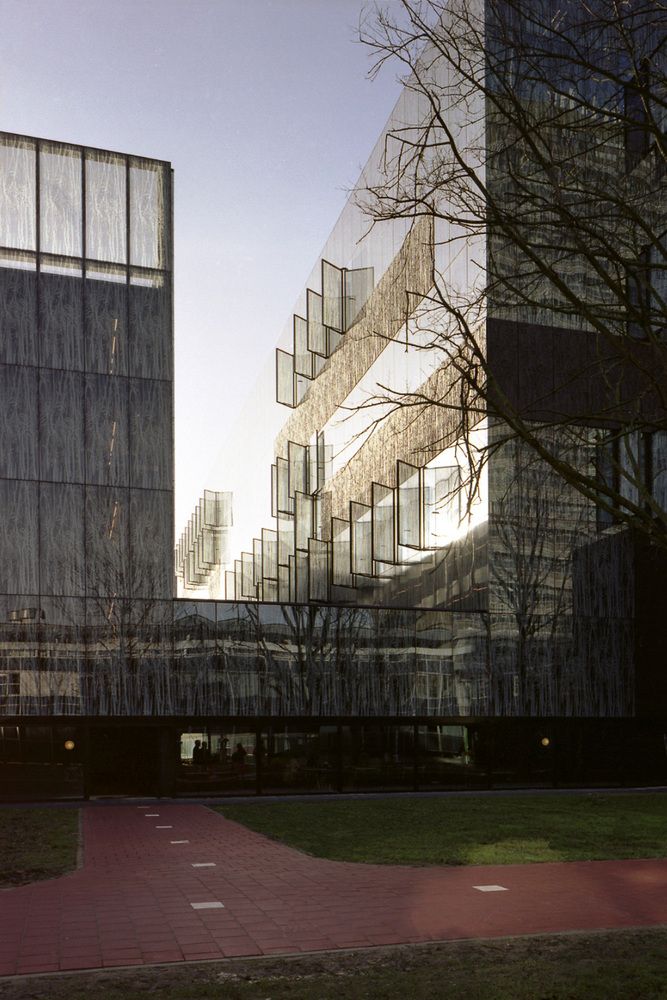
Central Library (Calgary, Alberta, Canada)
Snøhetta (international architecture firm) has worked in collaboration with DIALOG to present the Central Library, project that has played a main role when it comes to the city’s expansion.
The building is located over the Light Rail Transit Line tracks, which allows direct access for visitors. It is a bridge connecting Downtown Calgary and the new East Village, blending the classic with the contemporary.
American cedar was used in its design, creating a warm effect, thanks to the light coming in from the ceiling (which has an eye-shaped opening); it also helps control the acoustics.



